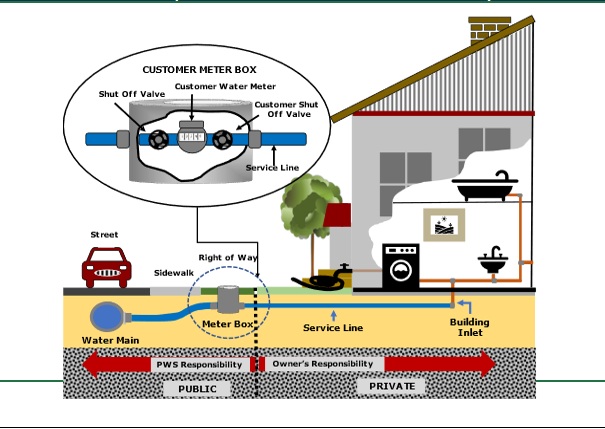Lead Service Line Inventory (LCRR) Lead and Copper Rule Revisions
Lead Service Line Inventory
Utilities Department
The City of Celeste Public Works has inventoried and inspected public and private service lines. In 2024, all 386 service lines, which are connected to water meters at homes/buildings built and/or with service lines installed before 1987, as part of the U.S. Environmental Protection Agency’s (EPA) Revised Lead and Copper Rule. The 386 addresses were a part of a required study by the EPA and TCEQ (Texas Commission on Environmental Quality). Any new addresses will be identified for inventory purposes as they become available, and inspections will continue throughout the year.
Inventory findings were published by the EPA's deadline of October 16, 2024.
The inspections are being performed only on service lines. Neither the City nor the contractor will be inspecting individual plumbing components inside residents’ homes.
Frequently Asked Questions
Why is this program being implemented?
Lead service lines are the largest source of lead in contact with drinking water. This inventory will help us identify where lines are located for eventual replacement.
The use of lead materials in plumbing was banned in 1986 under the Federal Safe Drinking Water Act, and while no large pipes (mains) within the City’s distribution system contain lead, it is possible that both public (City-owned) and private (homeowner-owned) service lines are made of lead, galvanized steel, or contain lead solder. The Public Works Department annually monitors the water as part of the EPA’s Lead and Copper Rule.
What causes lead in drinking water?
Lead is typically only detected in water that has traveled through lead service lines, galvanized lines downstream from lead lines, or copper lines with lead solder, lead joints, or lead fittings. Over time, lines can corrode, allowing small amounts of lead to leach into the water.
Does the City of Celeste have lead in its water supply?
No. The water treated and delivered from the Woodbine Aquifer does not contain lead. The most common source of lead is from public or private service lines. Service lines are the small-diameter lines that connect on either side of the water meter. Many homes built prior to 1945 may have service lines made of lead or galvanized steel.
What is the difference between a private and public service line?
A public service line is a line that connects the individual water meter to the water main located in the street or easement. It is the responsibility of the municipality or utility to manage and maintain. A private service line is the portion of the line that connects the water meter to a home or business. In many cases, the public line may extend approximately 18” on the private side of the meter box, or vault, which is the permanent hole where the water meter is housed.
Will the City pay to replace my private service line?
Pursuant to Texas State law, our utility is prohibited from subsidizing services to individuals. This includes the replacement of private service lines. Federal or State funding may become available to assist homeowners with replacing their private service lines.
The City of Celeste’s drinking water meets all Federal and State safe drinking water standards.
The EPA has set the maximum contaminant level goal for lead in drinking water at zero because lead is a toxic metal that can be harmful to human health even at low exposure levels. To learn about health effects associated with lead in drinking water, visit the EPA’s website.
Detailed Lead & Copper Lead Line Inventory

Example of Service Line Ownership Distinction
